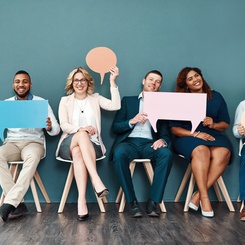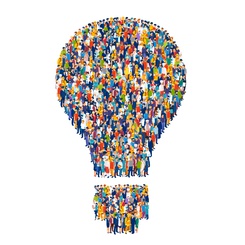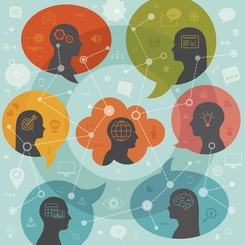Consumers want to be heard – more than that, they want to be considered and represented. They struggle for inclusion and diversity. The fashion industry is evolving to meet the changing needs and wishes of its consumers: one way it is doing so is with the rise of inclusive fashion, i.e. sizing that fits a greater variety of people instead of just the tall and slim among us. We can see this change in muses and models and in the appearance of larger sizes in ready-to-wear collections. How did inclusive fashion come about?
At first, inclusive fashion was an afterthought in the fashion industry. Brands specializing in larger sizes were on the fringes of fashion, with dedicated brands, lines, and websites. Fashion and plus sizes didn’t go together, with plus-size fashion looked down on and not seen as worthwhile.
There was little overlap between the two worlds and few fashion brands that sold plus sizes. The few that did only offered plus sizes on a limited number of collections. These collections were often out of stock, or when they were available, relegated to dusty corners of stores.
Women who didn’t wear straight sizes felt left out of fashion, because they didn’t have access to the same well-known, well-regarded brands.
American plus-size activists spearheaded the emergence of plus-size fashion in the US, with the torch eventually taken up by other countries. Thanks to social media, these activists changed people’s preconceived notions on plus-size fashion.
First, plus-size activists got a lot of buzz on social media. Some became social media stars, especially in English-speaking countries.
They showed a new way of looking at bodies and beauty, highlighting new aesthetics that were far from what we are used to seeing from brands or in magazines. The idea of body positivity also gained traction, the idea that all bodies are beautiful and should be celebrated. Plus-size fashion became sexy and fashionable. What’s more, we changed our way of talking about it, with plus-size fashion also referred to as size-inclusive fashion or curvy fashion, much more positive and flattering language.
Second, these activists developed a new collective identity that was both positive and sought-after. Plus-size women have often felt stigmatized and marginalized in the fashion world: now, they are valued and acknowledged. They feel like they fit in the world of fashion.
Third, these activists have broken into fashion, granting them greater access. Some have even worked with big names and appeared in fashion magazines. Still others, like Ashley Graham and Alva Claire, have become supermodels. Now, they are walking for big names like Versace, Fendi, and Salvatore Ferragamo. Rihanna also gave models bigger than a size 0 a platform when she had them model for her Savage x Fenty lingerie line.
All these steps taken by body-positive activists have made plus-size fashion more visible, sought-after, and well regarded.
Additionally, the rise of plus-size fashion and body positivity is part of a broader movement fighting discrimination and promoting inclusiveness, catalyzed by the Black Lives Matter movement launched in the US in 2013.
Initially, this movement focused on racism in the US, and has now grown to include other kinds of discrimination and inequality, like those linked to gender, ethnicity, disabilities, sexual orientation, and body type. The conversation around inclusiveness has resonated in the fashion industry.
Many brands have thought about inclusive fashion and updated their practices, both in terms of their products and their communications. Plus-size fashion is increasingly becoming part of “mainstream” fashion, with the barriers between plus-size fashion and straight size fashion falling down. The name “plus-size fashion” is also going out of style: now, the term “inclusive fashion”, which includes all body types, is more à la mode.
That being said, this is just the beginning, and there is a lot of work to be done so that inclusive fashion becomes a fixture in retail. While plus-size fashion has gotten increased attention and legitimacy, it still needs to be expanded so that it’s more often found in stores. Fashion also needs to expand its inclusivity, in particular considering disabilities when designing products.









